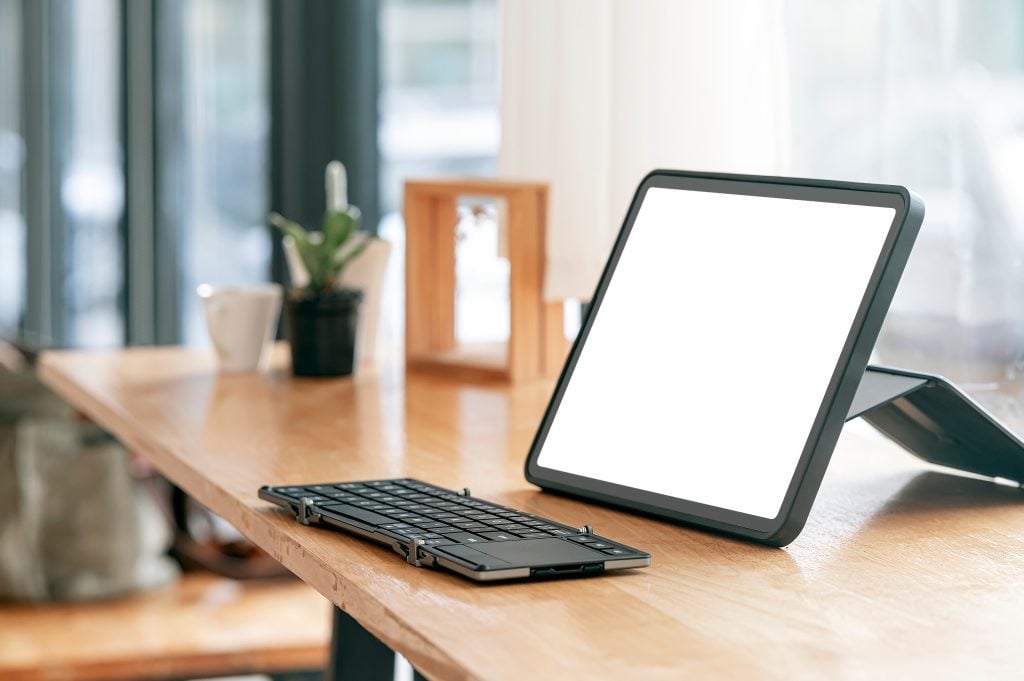For software engineers, efficiency, clarity, and flexibility are non-negotiable. A portable monitor for laptop is more than an accessory—it’s a productivity multiplier. By providing extra screen space in a slim, travel-ready form factor, it transforms a limited laptop setup into a flexible dual-screen workstation. Whether you’re coding in a coffee shop, debugging on the go, or managing multiple dashboards, the right laptop monitor extender can completely change your workflow.
Part 1. How Dual Screens Supercharge Software Development
- Reduce context switching: Keep your IDE open on your main screen while running a browser, terminal, or documentation on the portable monitor. This minimizes window-tabbing and saves mental energy.
- Debug smarter: Place real-time logs or debugging tools on the second display while keeping your code uninterrupted. This setup speeds up the debugging process significantly.
- Reference without disruption: Compare versions of code, review API docs, or follow tutorials on one screen while coding on the other—no more juggling windows.
Part 2. Optimizing Workspace With Vertical Mode and Task Segregation
- Portrait mode for coding: Many portable monitors rotate into vertical orientation, allowing engineers to view more lines of code at once and scroll less.
- Clear task separation: Dedicate your laptop display to writing code and use the portable monitor for Slack, Jira, or test dashboards. This helps maintain focus while staying connected.
- Flexible layouts anywhere: From offices to hotel rooms, portable monitors let you replicate a multi-screen desktop experience without carrying bulky equipment.
Part 3. Comfort and Ergonomics for Long Coding Sessions
- Better posture: Laptops often force you to hunch down. A portable monitor can be propped up at eye level, reducing neck and back strain.
- Less fatigue, more output: With two well-arranged displays, your eyes and shoulders endure less stress during long coding marathons.
- A cleaner setup: Instead of stacking endless windows, you distribute tasks across two screens, creating a more organized and visually comfortable workflow.
Part 4. Why the Cevaton N2 Portable Monitor Stands Out
Among the many options, the Cevaton N2 Portable Monitor is engineered with software engineers in mind:
- Full HD clarity: Ensures sharp text and precise visuals for coding, debugging, or UI testing.
- Universal compatibility: Equipped with USB-C and HDMI ports, it connects effortlessly with laptops, consoles, and even mobile devices.
- Lightweight build: Slim and portable, perfect for digital nomads and frequent travelers.
- Flexible orientation: Switch between landscape and portrait modes to adapt to coding or testing needs.
If you’re searching for the best portable monitor for laptop, the N2 is an ideal balance of portability, functionality, and reliability.
Part 5. Who Benefits Most?
| Role | Benefit |
| Front-end engineers | Code and preview UI side by side for instant feedback. |
| QA testers | Run test environments on one screen while documenting on the other. |
| DevOps / SREs | Keep dashboards and logs visible without interrupting coding tasks. |
| Frequent travelers | Carry a full workstation setup without bulky hardware. |
FAQs
- What is a portable monitor for a laptop used for?
It extends your laptop screen, allowing dual-screen setups for coding, debugging, referencing documentation, or multitasking efficiently. - Are portable monitors worth it for programming?
Yes. They reduce context switching, allow side-by-side coding and testing, and improve ergonomics—making them invaluable for software engineers. - Can you use a portable monitor vertically for coding?
Absolutely. Many support portrait orientation, which is ideal for viewing more lines of code or scanning long logs. - How do portable monitors connect to laptops?
Most connect via USB-C (with power delivery) or HDMI. USB-C is especially convenient as it can handle both power and display through one cable. - What size portable monitor is best for software engineers?
Most engineers prefer 15.6–17 inches with at least Full HD resolution. It’s a sweet spot between portability and sufficient screen real estate.
Final Thoughts
For software engineers, adding a portable monitor for laptop isn’t a luxury—it’s a workflow upgrade. From debugging and testing to improving posture and productivity, a portable display offers tangible benefits every day. If you’re ready to elevate your setup, the Cevaton N2 is a standout choice among the best portable monitors for laptop, combining sharp visuals, lightweight portability, and the flexibility to code, debug, and collaborate anywhere.
Sandra Larson is a writer with the personal blog at ElizabethanAuthor and an academic coach for students. Her main sphere of professional interest is the connection between AI and modern study techniques. Sandra believes that digital tools are a way to a better future in the education system.






